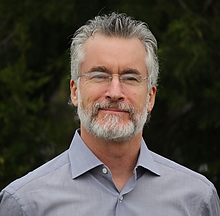 A University of Maryland computational biologist has received funding from the National Science Foundation (NSF) to develop new tools and strategies for analyzing genomic data from severe acute respiratory syndrome coronavirus 2 (SARS-CoV-2), the strain of coronavirus responsible for COVID-19.
A University of Maryland computational biologist has received funding from the National Science Foundation (NSF) to develop new tools and strategies for analyzing genomic data from severe acute respiratory syndrome coronavirus 2 (SARS-CoV-2), the strain of coronavirus responsible for COVID-19.
Michael Cummings, a professor of biology with an appointment in the University of Maryland Institute for Advanced Computer Studies (UMIACS) is primary investigator of the $188K award. The funding comes from the NSF Rapid Response Research initiative, which aims to mobilize the scientific community in response to the current pandemic.
A major goal of the project, Cummings says, is to accelerate the analyses of SARS-CoV-2 genomic data needed by scientists and public health officials battling the virus.
“Evolutionary analyses using genomic data are an essential component of the scientific response to the COVID-19 pandemic,” he says.
Inferring the evolutionary history, or phylogeny, of virus samples—coupled with information on the time and location of where the samples originated—allows scientists to estimate the divergence of viral lineages, Cummings says. These types of analyses can provide time estimates that predate sampling events, meaning that public health officials could ostensibly predict where and when certain strains of SARS-CoV-2 could pop up next, and whether a strain of the virus has mutated from its last outbreak.
But current methods of analyzing these samples takes time. Even with powerful advances in computing power over the last decade, the process can require up to 150 hours or more to complete.
Cummings, working closely with Daniel Ayers, an assistant research scientist in UMIACS, plans to develop new software and parallel computing algorithms that could help decrease this timeline considerably.
The Maryland researchers are also working to improve the phylogenetic analyses of a certain type, referred to as molecular phylodynamics, which includes not only evolutionary history but also information on viral genetic variation and viral population dynamics—again all in the context of geography and time.
Phylodynamic analyses are particularly rich in terms of inferences, albeit at a considerable computational cost, Cummings says.
Ultimately, the research by Cummings and Ayers will offer a more comprehensive view of the transmission patterns for SARS-CoV-2. This includes defining patterns of SARS-CoV-2 movement and migration; identifying the specific timeline of an outbreak origin; determining the rate of mutation and detection of significant mutations with the resultant health impacts; identifying the prevalence of the virus in populations at different geographical scales; reproductive number and impact on policy; and infection-to-case reporting rates.
To increase the speed at which samples are sequenced and also to improve accuracy and decrease cost, Cummings and Ayers plan to work with others to develop more efficient parallel computing strategies and software, taking advantage of NSF-supported high-end computational resources at the Pittsburgh Supercomputing Center, San Diego Supercomputing Center, and the Texas Advanced Computing Center.
They will also rely upon open-source software they developed—known as BEAGLE, for Broad-platform Evolutionary Analysis General Likelihood Evaluator—that has become an essential component in the software workflow of many scientists studying the evolutionary history of organisms, including the viruses that cause AIDS, influenza and Ebola.
“BEAGLE is used in a variety of studies that contribute to our understanding of evolution and biology, which can have a role in informing decision-making,” Ayres says. “Now there are dozens, if not hundreds, of scientists worldwide using BEAGLE to better understand SARS-CoV-2.”
Though Cummings has been active with research for more than a decade on other serious public health issues, the speed and strength by which the current COVID-19 pandemic has spread has given him pause for thought, and also bolstered his resolve to help find answers.
“Science is a privilege, and we are given multiple opportunities to give back—we write papers and we educate students,” he says. “But now there is an opportunity to use the ideas and tools we’ve been working on for quite a while to have a positive impact on the current crisis. It gives us the incentive to work as hard as we possibly can.”
—Story by Tom Ventsias